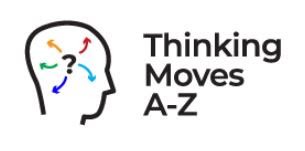Thinking Moves - a cure for Thinking Deficiency?
Like many, I take multivitamin supplements. And when I know I’ve not eaten well, I sometimes resort to those “nutritionally complete” milkshakes now found in supermarket chillers.
Why? Because no matter how hard I plan my meals, I want to ensure I’m not deficient in anything. It takes the pressure off tracking what I’m eating to make sure I get enough iron, Vitamin B12, or whatever else is proven to stave off drowsiness, declines and diseases.
When I was a Head of Department in a secondary school, I’d often be sat on a Thursday with still four lessons to plan for Friday. And like most teachers, I fell back on tried-and-trusted activities. And these probably reflected my own learning preferences too.
There was probably plenty of “thinking deficiencies” in my planning. Some skills probably got neglected over the course of the year as I scrambled lessons together. Just like we probably neglect certain areas of nutrition when we’re pressed for time.
I recall wishing for something that could make sure I was “ticking all the boxes” and making sure nothing was under-served.
Unfortunately, the Thinking Moves framework came ten years too late for me in that role, but it's a timely addition to the metacognitive landscape for all. It’s a simple means of planning for the entire range of thinking skills, plus a tool for assessing our own own planning in retrospect.
Guard against Thinking Deficiency: 3 tips for using Thinking Moves
1.Audit your own planning - look at the lessons you’ve taught in the past fortnight, or just think about your teaching on the whole. With another sheet of paper, make three columns:
Frequently Sometimes Not at all
And place each of the 26 moves in a column - determined by how often you invite students to make them in these two weeks.
2. Use the Thinking Moves book to find new activities that promote each move. Endeavour to cover 26 new activities in the space of a term - that’s just two quick activities a week.
3. Tape the list of Thinking Moves to your desk - remind you to use them to plan activities, and to check your planning against them.
